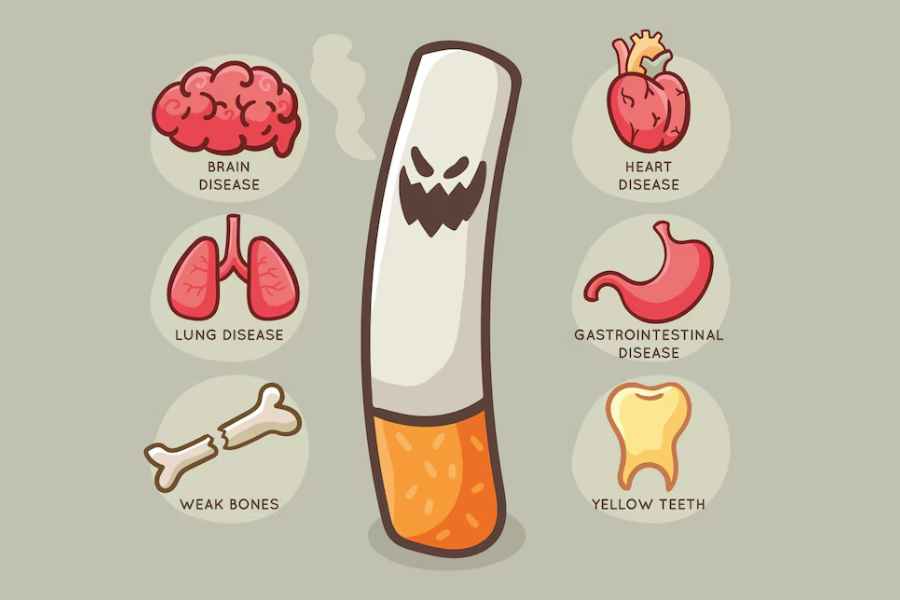
Every year on May 31st, World No Tobacco Day is observed to raise awareness about the health risks associated with tobacco use and to advocate for effective policies to reduce tobacco consumption.
The theme for World No Tobacco Day 2024 is “Choose Life, Say No to Tobacco”
Emphasizing the importance of making tobacco-free choices and encouraging individuals to quit using tobacco products.
Understanding the Impact of Tobacco
Tobacco use is a leading cause of preventable diseases and premature death worldwide. Whether it’s smoked, chewed, or inhaled, tobacco contains harmful substances that are detrimental to health. Here are some of the ways tobacco use affects our well-being:
Health Risks:
- Cancer: Tobacco use is a significant risk factor for various types of cancer, including lung, throat, mouth, esophagus, and pancreatic cancer.
- Cardiovascular Diseases: Smoking damages blood vessels, leading to an increased risk of heart attacks, strokes, and other cardiovascular diseases.
- Respiratory Issues: Inhalation of tobacco smoke can cause chronic respiratory conditions like chronic obstructive pulmonary disease (COPD) and asthma.
- Oral Health Problems: Tobacco use is linked to gum diseases, tooth loss, and oral cancer.
- Pregnancy Complications: Pregnant women who smoke are at higher risk of miscarriage, premature birth, low birth weight, and developmental issues in their babies.

Quitting Tobacco: Your Health, Your Choice
Quitting tobacco is a challenging but essential step towards a healthier lifestyle. Here are some tips to help you or your loved ones quit using tobacco products:
1. Motivation and Commitment:
- Recognize the Health Benefits: Understand the immense health benefits that come with quitting tobacco, such as reducing your risk of diseases and improving overall well-being.
- Set Personal Reasons: Identify your own personal reasons for quitting, whether it’s for your health, family, or financial benefits.
2. Seek Support:
- Connect with Loved Ones: Share your decision with supportive family and friends who can encourage you during the quitting process.
- Join Support Groups: Seek out local or online support groups where you can connect with others going through the same journey and share experiences and resources.
3. Develop Coping Strategies:
- Find Healthy Alternatives: Engage in activities that distract you from cravings, such as exercise, hobbies, or spending time with loved ones.
- Stress Management: Practice stress reduction techniques such as meditation, deep breathing exercises, or seeking professional help if necessary.

4. Nicotine Replacement Therapy (NRT) and Medications:
- Consult a Healthcare Professional: Talk to your healthcare provider about nicotine replacement therapy options, such as patches, gums, lozenges, or inhalers, which help reduce withdrawal symptoms.
- Medications: In some cases, healthcare professionals may prescribe medications to aid in quitting tobacco. These medications help manage nicotine cravings and withdrawal symptoms.
5. Stay Committed and Relapse Prevention:
- Stay Positive: Embrace the journey and remain positive even if there are setbacks or challenges along the way.
- Learn from Relapses: If you experience a relapse, don’t be disheartened. Reflect on the triggers and situations that led to the relapse and develop strategies to overcome them in the future.
- Celebrate Milestones: Acknowledge and celebrate your progress and milestones as you gradually reduce and eliminate tobacco use from your life.
Remember, quitting tobacco is not an easy process, but it is possible with dedication, support, and the right resources. By choosing life and saying no to tobacco, you are taking a significant step towards improving your overall health and well-being. Together, let’s strive for a world where tobacco consumption is minimized, and future generations are liberated from the grip of tobacco-related diseases.
Follow BNC for more useful content

